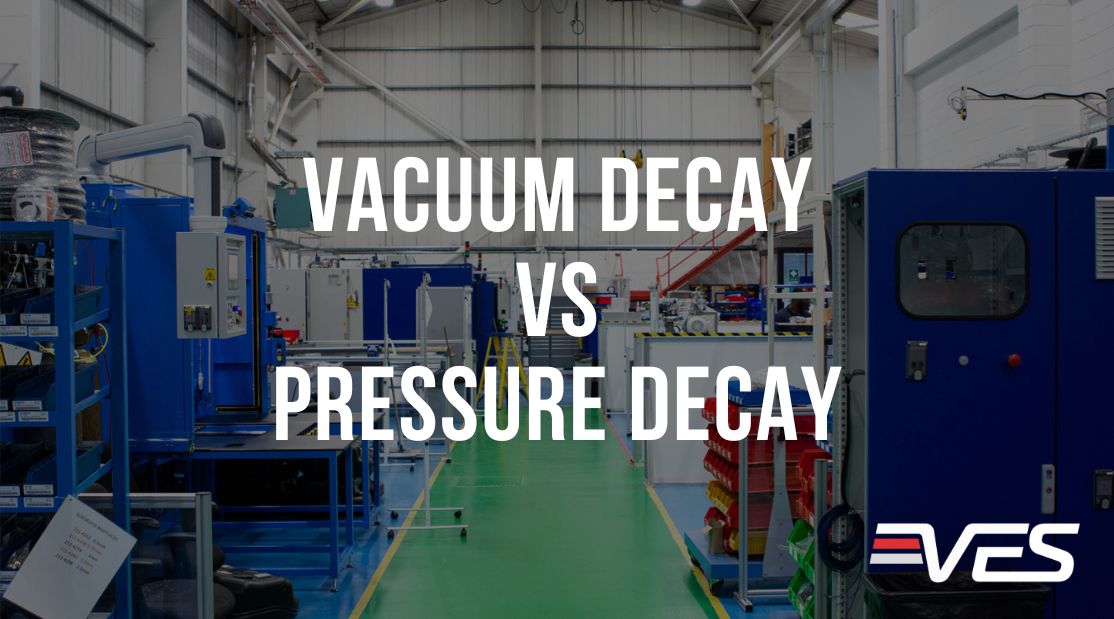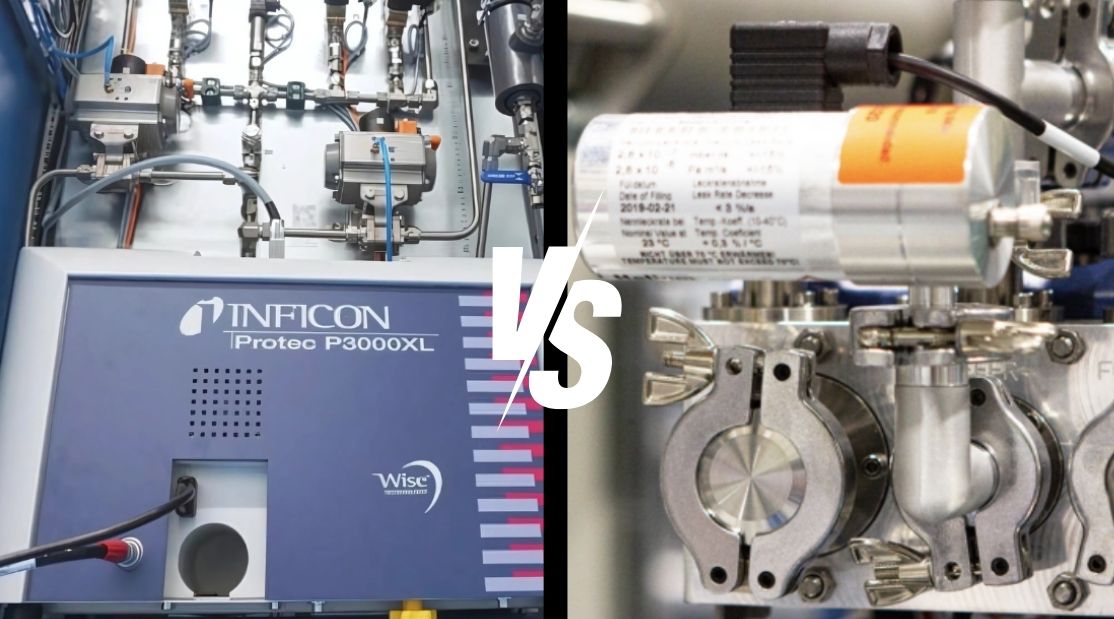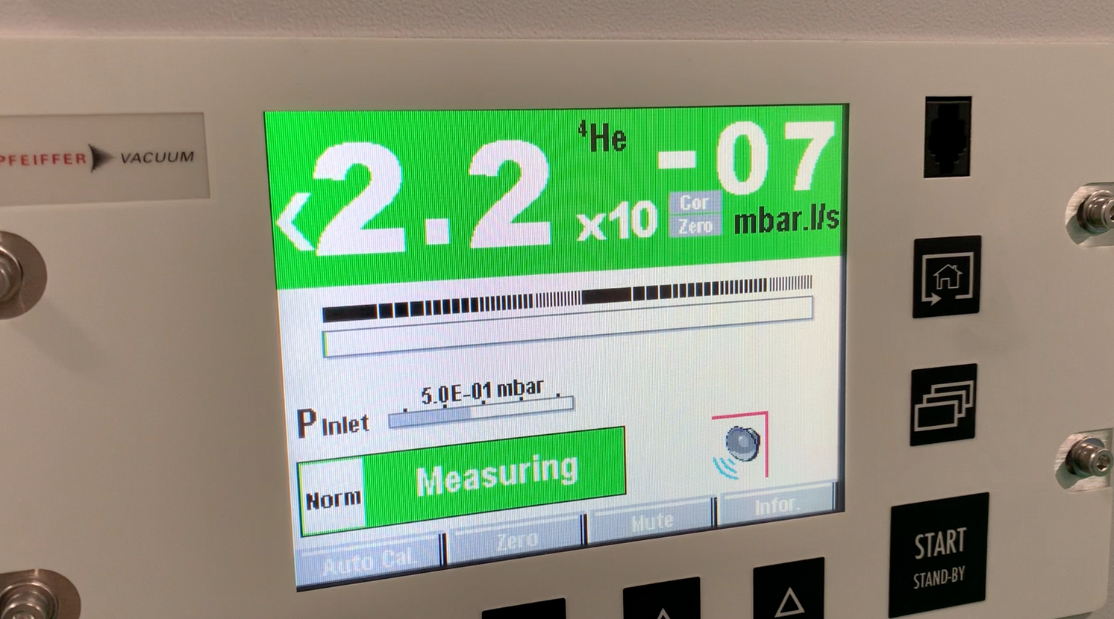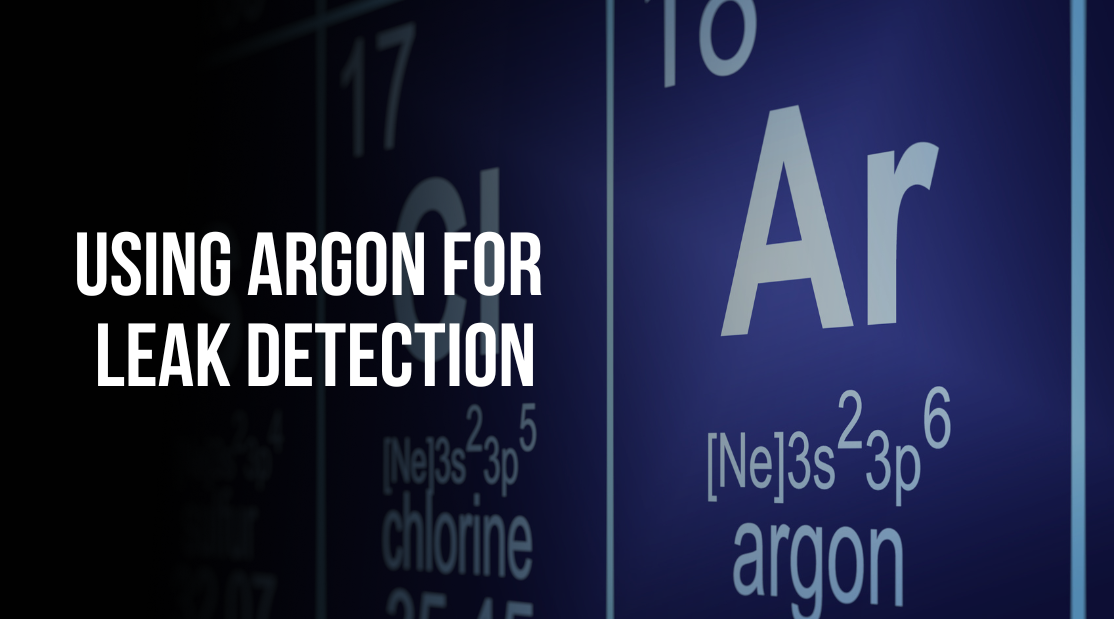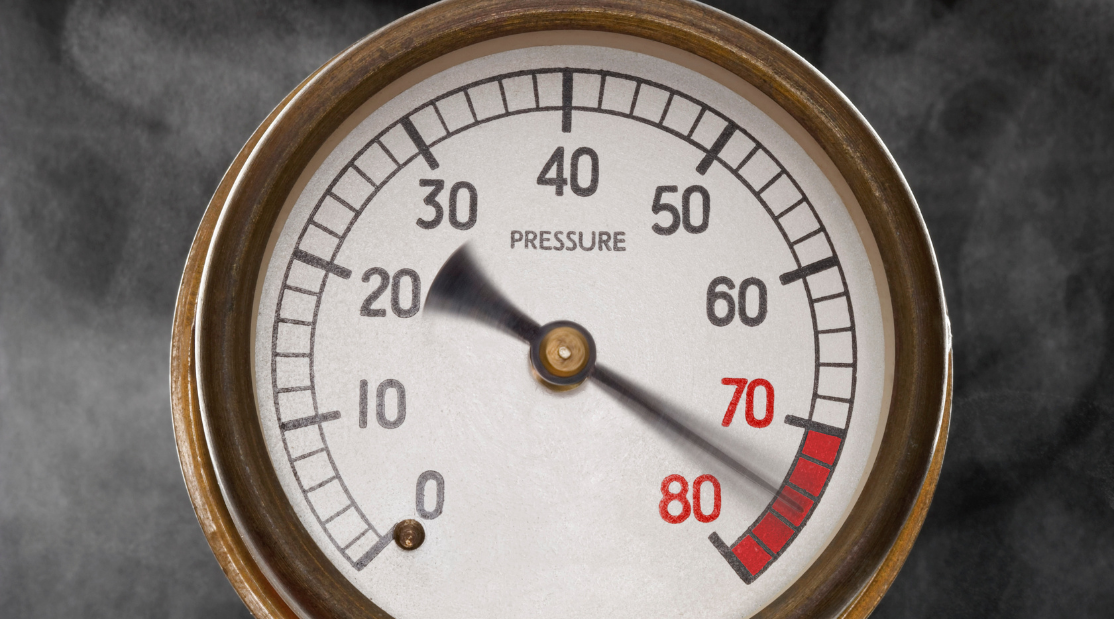At VES, we specialise in providing high-quality leak detection solutions tailored to our customers’ needs. When it comes to selecting a leak test method, two popular choices are vacuum decay and pressure decay tests. Both methods have their unique advantages and limitations, making it essential to understand which one is best suited for your specific application. In this article, we will explore the key differences between vacuum decay and pressure decay testing, and provide insights into their appropriate use cases.
Understanding Pressure Decay Testing
Pressure decay testing is a straightforward method that involves pressurising a component with a gas (usually dry air or nitrogen) and monitoring any decrease in internal pressure over a set period. The presence of a leak is indicated by a drop in pressure, which can be measured to determine the leak rate.
Advantages of Pressure Decay Testing
- Simplicity and Ease of Use: Pressure decay testing is a simple, compact, and easy-to-use method. It does not require complex equipment or extensive operator training, making it a cost-effective option for many applications.
- Cost-Effective: This method is relatively inexpensive to implement and operate. It does not require high investment in equipment or operational costs, which makes it accessible for small to medium-sized manufacturers.
- Dry Testing: As a dry method, pressure decay testing eliminates the need for drying components after the test, which is a significant advantage over methods like bubble testing.
Limitations of Pressure Decay Testing
- Low Sensitivity: The sensitivity of pressure decay testing is relatively low, typically around 10^-2 mbar·litre/sec. This makes it less suitable for detecting very fine leaks.
- Long Stabilisation Times: The method requires sufficient time to stabilise the internal pressure before monitoring, which can slow down the testing process, especially for larger components.
- Environmental Susceptibility: Pressure decay tests are highly sensitive to environmental changes, particularly temperature fluctuations. These changes can cause false readings and affect the accuracy of the results.
- Mechanical Instability: Pressurising the component can cause its volume to change, leading to potential inaccuracies in the leak detection results.
- Inability to Locate Leaks: Pressure decay testing can detect the presence of a leak but cannot pinpoint its exact location.
Understanding Vacuum Decay Testing
Vacuum decay testing, or pressure rise testing, operates on the opposite principle of pressure decay testing. In this method, the component is evacuated (subjected to a vacuum), and any increase in pressure due to test media entering the part indicates a leak.
Advantages of Vacuum Decay Testing
- Reduced Environmental Susceptibility: Since the internal pressure during vacuum decay testing is lower than the external atmospheric pressure, the method is less affected by temperature changes, leading to more reliable results.
- Better for Thin-Walled Parts: Vacuum decay testing is suitable for parts that can withstand vacuum conditions without collapsing. It stresses the component in a manner that more accurately reflects its operational environment.
- Improved Sensitivity: Although the sensitivity is similar to pressure decay testing (around 10^-2 mbar·litre/sec), vacuum decay testing can sometimes provide more accurate readings due to reduced environmental influences.
Limitations of Vacuum Decay Testing
- Surface Out-Gassing and Liquid Evaporation: The real sensitivity of vacuum decay testing can be affected by surface out-gassing and liquid evaporation. Traces of humidity can increase the internal pressure, creating false leak indications.
- Pressure Difference Limitation: The pressure difference that can be applied during the test cannot exceed 1 bar. If the operating pressure of the part is higher than 2 bara, the part might not be reliably tested.
- Opposite Stress Direction: Vacuum decay testing stresses the part in the opposite direction of its typical operating conditions. This can sometimes cause certain leaks to close rather than open, leading to inaccurate results.
Choosing the Right Method for Your Needs
Selecting between vacuum decay and pressure decay testing depends on several factors:
- Sensitivity Requirements: For applications requiring high sensitivity, neither method may be sufficient, and a helium-based test might be more appropriate.
- Environmental Conditions: If your testing environment is prone to temperature fluctuations, vacuum decay testing may offer more reliable results.
- Component Characteristics: Thin-walled parts that can withstand a vacuum are better suited for vacuum decay testing, while more robust parts may benefit from pressure decay testing.
- Operational Considerations: Consider the throughput, ease of use, and cost when choosing between the two methods. Pressure decay testing is simpler and more cost-effective, but vacuum decay testing can offer more reliable results under certain conditions.
At VES, we leverage our extensive expertise to help manufacturers select the most appropriate leak test method for their specific needs. Our goal is to provide reliable and efficient solutions that enhance product quality and performance while meeting sustainability goals. Contact us today to learn more about our comprehensive range of leak testing services and how we can support your manufacturing processes.
